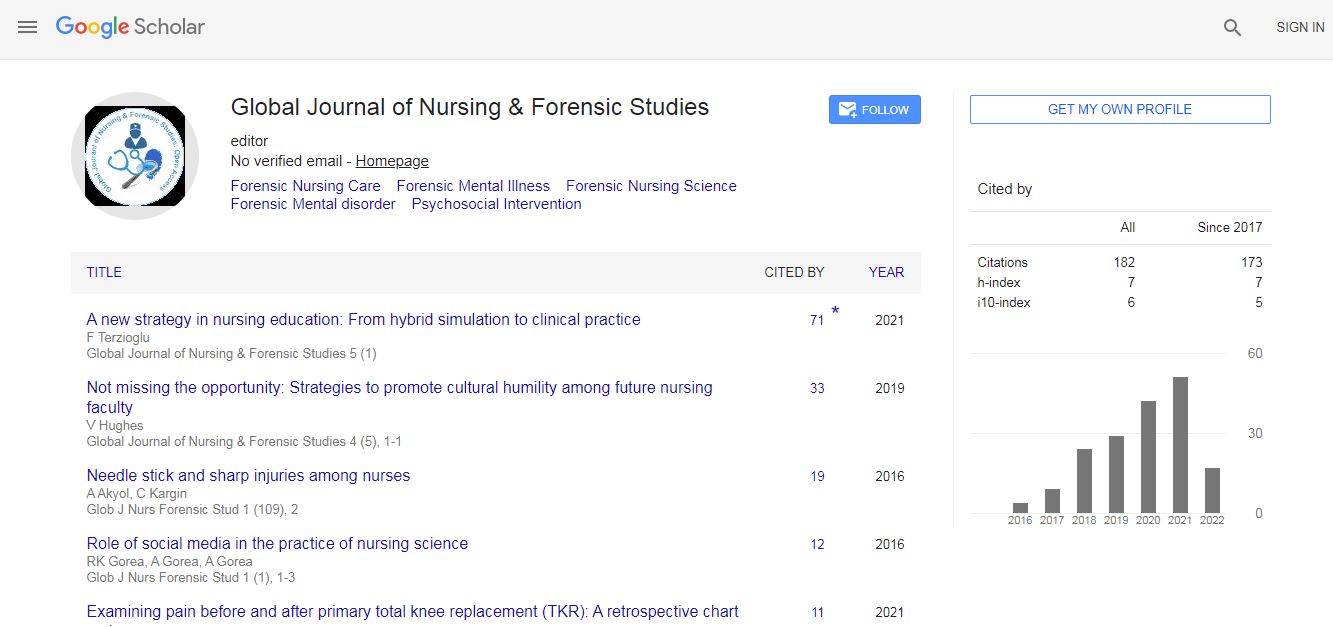Our Group organises 3000+ Global Conferenceseries Events every year across USA, Europe & Asia with support from 1000 more scientific Societies and Publishes 700+ Open Access Journals which contains over 50000 eminent personalities, reputed scientists as editorial board members.
Open Access Journals gaining more Readers and Citations
700 Journals and 15,000,000 Readers Each Journal is getting 25,000+ Readers
Google Scholar citation report
Citations : 82
Optometry: Open Access received 82 citations as per Google Scholar report
Indexed In
- Google Scholar
- RefSeek
- Hamdard University
- EBSCO A-Z
- Euro Pub
- ICMJE
Useful Links
Recommended Journals
Related Subjects
Share This Page
Toric orthokeratology contact lenses for patients with corneal elevation differences
3rd International Conference and Expo on Optometry & Vision Science
Nicholas Gidosh
Lehigh Valley Eye Care Associates, USA
ScientificTracks Abstracts: Optom open access
Abstract
Orthokeratology is a well-established process by which the corneal surface is reshaped in order to correct refractive ametropia through the use of specific contact lens designs. Orthokeratology lenses are reverse geometry lenses specially designed to have very low clearance over the pupil. These designs are comprised of different zones to either provide treatment or stabilize the lens and can be organized into two broad categories: corneal refractive therapy (CRT, Paragon vision sciences, Inc.) or vision shaping treatment (VST, Bausch + Lomb). This lecture will review fundamentals in orthokeratology as well as troubleshooting common problems faced in practice. The presentation will then discuss more advanced design options available to apply ortho-k fitting to more patients by focusing on toric designs as well as describing other ways of customizing a fit. This will be done through discussion of elevation data obtained through a corneal topographer including how to measure the values and apply it when designing an orthokeratology lens. Topographical data is critical in understanding the shape of a patient’s corneal surface and thereby designing an appropriately fitting contact lens. Topographical maps will be discussed and analyzed to explain how to troubleshoot different problems and guide custom lens design. Recent Publications: 1. CC, Cheung SW and Cho P (2012) Toric orthokeratology for highly astigmatic children. Optometry and Vision Science. 89 (6): 849–855. 2. J, Cardona G and Quevedo L (2012) Toric double reservoir contact lens in orthokeratology for astigmatism. Eye Contact Lens. 38 (4): 245-251. 3. S W, Cho P and Chan B (2009) Astigmatic changes in orthokeratology. Optometry and Vision Science. 86 (12): 1352- 1358. 4. D, Malet J, Hoang-Xuan T and Azar DT (2011) Corneal elevation topography: best fit sphere, elevation, asphericity, toricity, and clinical implications. Cornea. 30 (5): 508-515. 5. Salmon T O and Horner D G (1995) Comparison of elevation, curvature, and power descriptors for corneal topgraphic mapping. Optometry and Vision Science.Biography

 Spanish
Spanish  Chinese
Chinese  Russian
Russian  German
German  French
French  Japanese
Japanese  Portuguese
Portuguese  Hindi
Hindi 